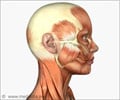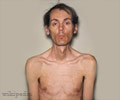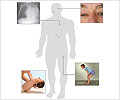Skeletal muscle has been developed successfully from stem cells. This may offer stem cell replacement therapy for Duchenne Muscular Dystrophy.
- Skeletal muscle has been developed from stem cells.
- This development shows that functional muscle cells can be created in a laboratory.
- It also offers replacement therapy for Duchenne Muscular Dystrophy.
The findings are a major step towards developing a stem cell replacement therapy for muscle diseases including Duchenne Muscular Dystrophy, which affects approximately 1 in 5,000 boys in the U.S. and is the most common fatal childhood genetic disease.
Without dystrophin, muscles degenerate and become progressively weaker. Duchenne symptoms usually begin in early childhood; patients gradually lose mobility and typically die from heart or respiratory failure around age 20. There is currently no way to reverse or cure the disease.
The development of skeletal muscles from stem cells
For years, scientists have been trying different methods that direct human pluripotent stem cells to generate skeletal muscle stem cells that can function appropriately in living muscle and regenerate dystrophin-producing muscle fibers. However, the study led by Pyle found that the current methods are inefficient; they produce immature cells that are not appropriate for modeling Duchenne in the laboratory or creating a cell replacement therapy for the disease.
"We have found that just because a skeletal muscle cell produced in the lab expresses muscle markers, doesn’t mean it is fully functional," said Pyle. "For a stem cell therapy for Duchenne to move forward, we must have a better understanding of the cells we are generating from human pluripotent stem cells compared to the muscle stem cells found naturally in the human body and during the development process."
By analyzing human development, the researchers found a fetal skeletal muscle cell that is extraordinarily regenerative. Upon further analysis of these fetal muscle cells two new cell surface markers called ERBB3 and NGFR were discovered; this enabled the researchers to precisely isolate muscle cells from human tissue and separate them from various cell types created using human pluripotent stem cells.
"We were missing another key component," said Michael Hicks, lead author of the study. The skeletal muscle cells were not maturing properly, he explained. "We needed bigger, stronger muscle that also had the ability to contract."
"Our long-term goal is to develop a personalized cell replacement therapy using a patient’s own cells to treat boys with Duchenne," said Hicks. "So, for this study we followed the same steps, from start to finish, that we’d follow when creating these cells for a human patient."
Stem cells for Duchenne Muscular Dystrophy
First, the Duchenne patient cells were reprogrammed to become pluripotent stem cells. The researchers then removed the genetic mutation that causes Duchenne using the gene editing technology CRISPR-Cas9. Using the ERBB3 and NGFR surface markers, the skeletal muscle cells were isolated and then injected into mice at the same time a TGF Beta inhibitor was administered.
"The results were exactly what we’d hoped for," said Pyle. "This is the first study to demonstrate that functional muscle cells can be created in a laboratory and restore dystrophin in animal models of Duchenne using the human development process as a guide."
Further research will focus on generating skeletal muscle stem cells that can respond to continuous injury and regenerate new muscle long-term using the team’s new isolation and maturation strategy.
References:
- Michael R. Hicks, Julia Hiserodt et al. ERBB3 and NGFR Mark a Distinct Skeletal Muscle Progenitor Cell in Human Development and hPSCs, Nature Cell Biology doi:10.1038/s41556-017-0010-2
Source-Eurekalert













